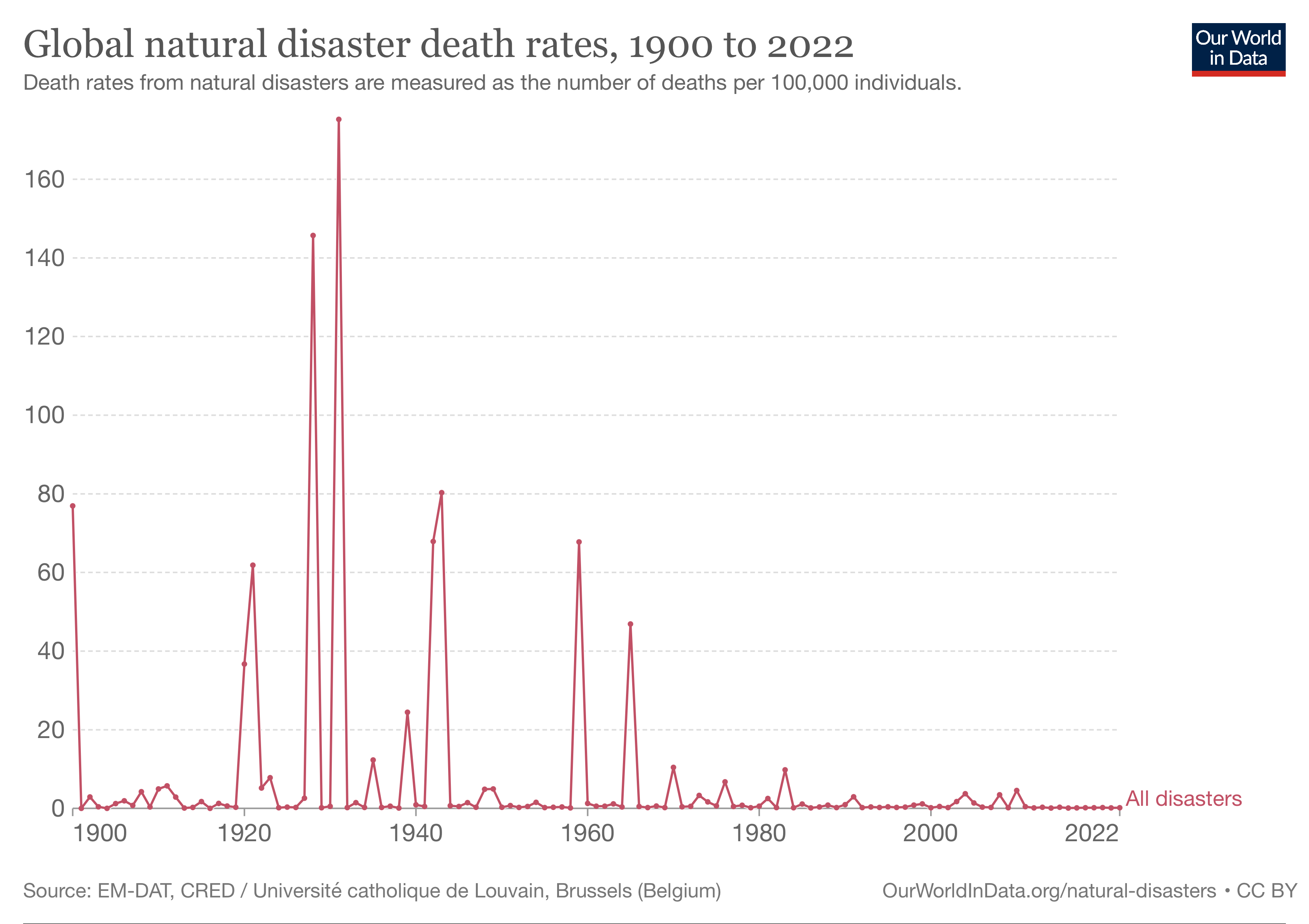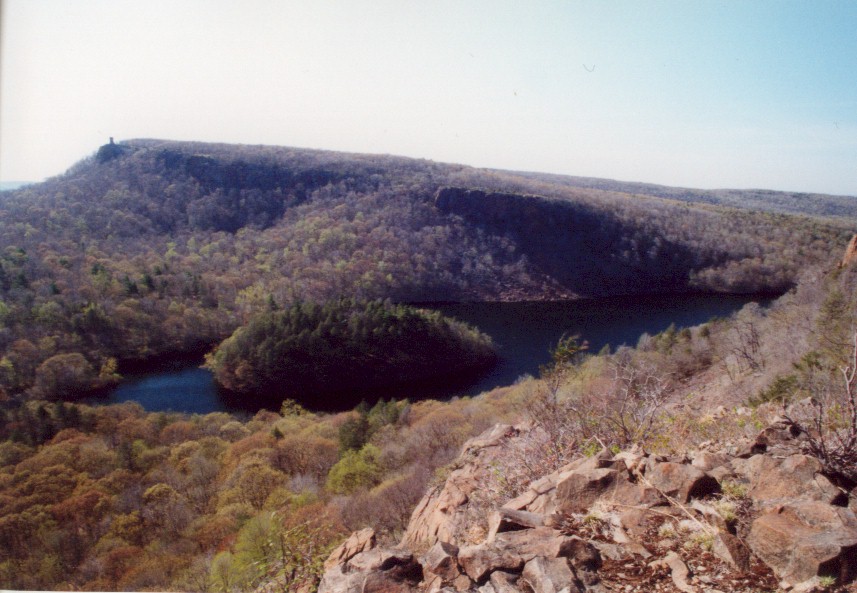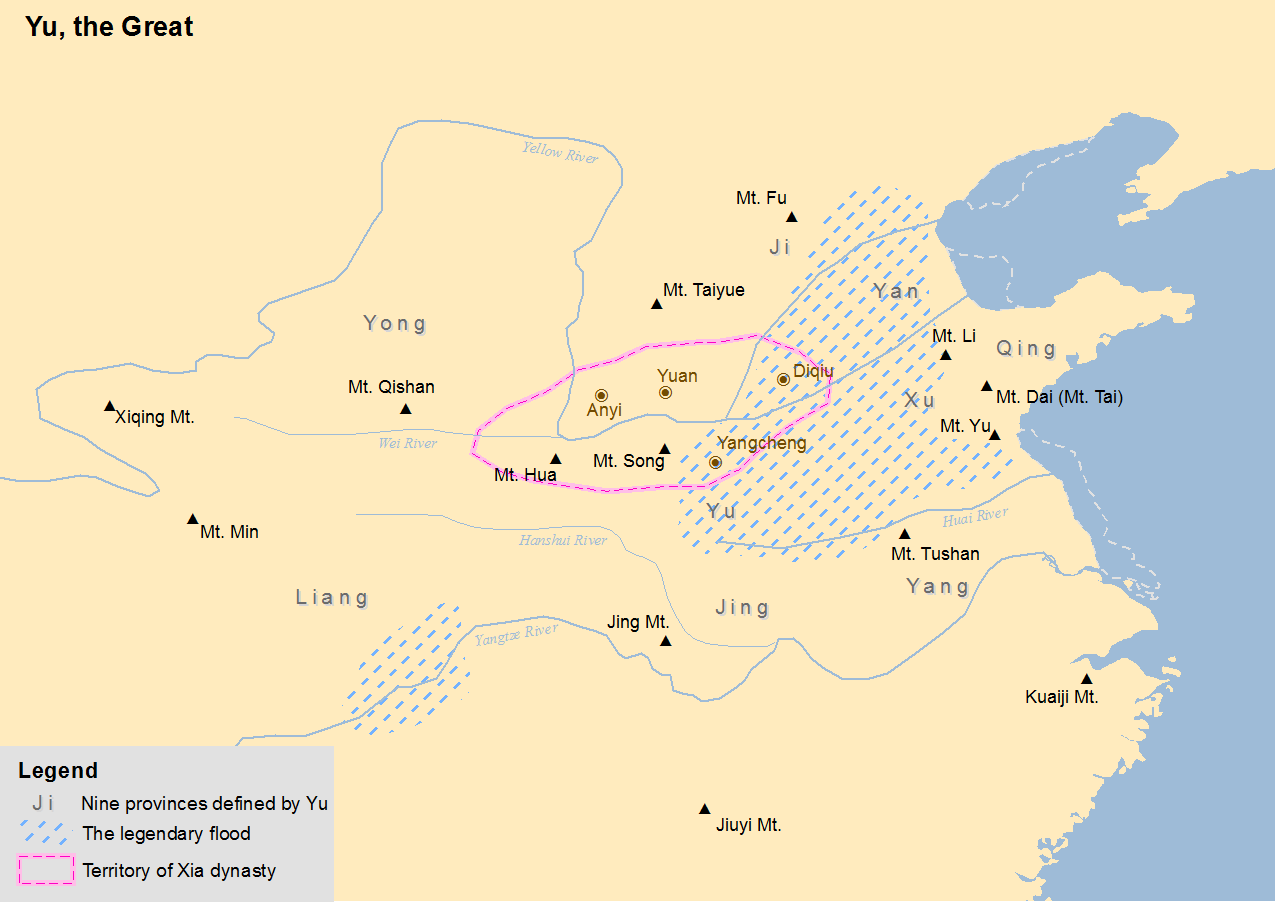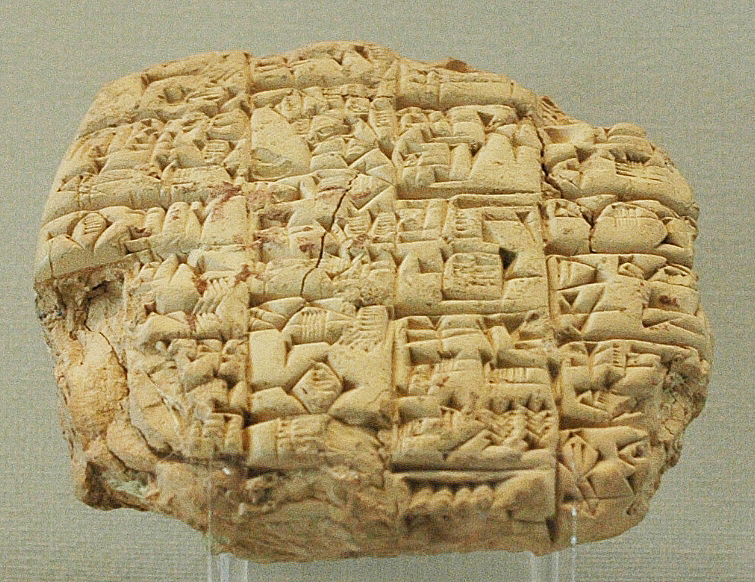|
Mid-24th Century BCE Climate Anomaly
The mid-24th century BCE climate anomaly is the period, between 2354–2345 BCE, of consistently, reduced annual temperatures that are reconstructed from consecutive abnormally narrow, Irish oak tree rings. These tree rings are indicative of a period of catastrophically reduced growth in Irish trees during that period. This range of dates also matches the transition from the Neolithic to the Bronze Age in the British Isles and a period of widespread societal collapse in the Near East. It has been proposed that this anomalous downturn in the climate might have been the result of comet debris suspended in the atmosphere.Baillie, M.G.L., 2007. ''Tree-rings indicate global environmental downturns that could have been caused by comet debris.'' In ''Comet/asteroid impacts and human society'' (pp. 105-122). Springer, Berlin, Heidelberg. In 1997, Marie-Agnès Courty proposed that a natural disaster involving wildfires, floods, and an air blast of over 100 megatons power occurred about 2350 ... [...More Info...] [...Related Items...] OR: [Wikipedia] [Google] [Baidu] |
Natural Disaster
A natural disaster is "the negative impact following an actual occurrence of natural hazard in the event that it significantly harms a community". A natural disaster can cause loss of life or damage property, and typically leaves some economic damage in its wake. The severity of the damage depends on the affected population's resilience and on the infrastructure available. Examples of natural hazards include: avalanche, coastal flooding, cold wave, drought, earthquake, hail, heat wave, hurricane (tropical cyclone), ice storm, landslide, lightning, riverine flooding, strong wind, tornado, typhoon, tsunami, volcanic activity, wildfire, winter weather. In modern times, the divide between natural, man-made and man-accelerated disasters is quite difficult to draw. Human choices and activities like architecture, fire, resource management or even climate change potentially play a role in causing "natural disasters". In fact, the term "natural disaster" has been called a misnom ... [...More Info...] [...Related Items...] OR: [Wikipedia] [Google] [Baidu] |
TNT Equivalent
TNT equivalent is a convention for expressing energy, typically used to describe the energy released in an explosion. The is a unit of energy defined by that convention to be , which is the approximate energy released in the detonation of a metric ton (1,000 kilograms) of TNT. In other words, for each gram of TNT exploded, (or 4184 joules) of energy is released. This convention intends to compare the destructiveness of an event with that of conventional explosive materials, of which TNT is a typical example, although other conventional explosives such as dynamite contain more energy. Kiloton and megaton The "kiloton (of TNT)" is a unit of energy equal to 4.184 terajoules (). The "megaton (of TNT)" is a unit of energy equal to 4.184 petajoules (). The kiloton and megaton of TNT have traditionally been used to describe the energy output, and hence the destructive power, of a nuclear weapon. The TNT equivalent appears in various nuclear weapon control treaties, and has b ... [...More Info...] [...Related Items...] OR: [Wikipedia] [Google] [Baidu] |
Mesopotamia
Mesopotamia ''Mesopotamíā''; ar, بِلَاد ٱلرَّافِدَيْن or ; syc, ܐܪܡ ܢܗܪ̈ܝܢ, or , ) is a historical region of Western Asia situated within the Tigris–Euphrates river system, in the northern part of the Fertile Crescent. Today, Mesopotamia occupies modern Iraq. In the broader sense, the historical region included present-day Iraq and Kuwait and parts of present-day Iran, Syria and Turkey. The Sumerians and Akkadians (including Assyrians and Babylonians) originating from different areas in present-day Iraq, dominated Mesopotamia from the beginning of written history () to the fall of Babylon in 539 BC, when it was conquered by the Achaemenid Empire. It fell to Alexander the Great in 332 BC, and after his death, it became part of the Greek Seleucid Empire. Later the Arameans dominated major parts of Mesopotamia (). Mesopotamia is the site of the earliest developments of the Neolithic Revolution from around 10,000 BC. It has been identi ... [...More Info...] [...Related Items...] OR: [Wikipedia] [Google] [Baidu] |
Remote Sensing
Remote sensing is the acquisition of information about an object or phenomenon without making physical contact with the object, in contrast to in situ or on-site observation. The term is applied especially to acquiring information about Earth and other planets. Remote sensing is used in numerous fields, including geography, land surveying and most Earth science disciplines (e.g. hydrology, ecology, meteorology, oceanography, glaciology, geology); it also has military, intelligence, commercial, economic, planning, and humanitarian applications, among others. In current usage, the term ''remote sensing'' generally refers to the use of satellite- or aircraft-based sensor technologies to detect and classify objects on Earth. It includes the surface and the atmosphere and oceans, based on propagated signals (e.g. electromagnetic radiation). It may be split into "active" remote sensing (when a signal is emitted by a satellite or aircraft to the object and its reflection detected by ... [...More Info...] [...Related Items...] OR: [Wikipedia] [Google] [Baidu] |
Umm Al Binni Lake
Umm al Binni lake is a mostly dry lake within the Central Marshes in Maysan Governorate in southern Iraq. The wide lake is approximately northwest of the Tigris–Euphrates confluence. Because of its shape, location, and other details, it was first conjectured by Sharad Master, a geoarchaeologist, to represent an impact crater. However, these claims have been disputed, with other studies finding subsidence of the underlying rock a more plausible explanation. Evidence as an impact crater Based on the interpretation of satellite imagery, Sharad Master suggests the in diameter dry lake may be an impact crater based on its nearly circular, slightly polygonal rim shape, and contrasting shape to other lakes in the region. However, the circularity of its shape has been disputed, with a 2018 study finding that the northeastern and southwestern sections of the lake rim were straight, corresponding to the directions of regional faulting. As to its origin, Masters rejects karst topograp ... [...More Info...] [...Related Items...] OR: [Wikipedia] [Google] [Baidu] |
Subsidence
Subsidence is a general term for downward vertical movement of the Earth's surface, which can be caused by both natural processes and human activities. Subsidence involves little or no horizontal movement, which distinguishes it from slope movement. Processes that lead to subsidence include dissolution of underlying carbonate rock by groundwater; gradual compaction of sediments; withdrawal of fluid lava from beneath a solidified crust of rock; mining; pumping of subsurface fluids, such as groundwater or petroleum; or warping of the Earth's crust by tectonic forces. Subsidence resulting from tectonic deformation of the crust is known as tectonic subsidence and can create accommodation for sediments to accumulate and eventually lithify into sedimentary rock. Ground subsidence is of global concern to geologists, geotechnical engineers, surveyors, engineers, urban planners, landowners, and the public in general.National Research Council, 1991. ''Mitigating losses from land subsi ... [...More Info...] [...Related Items...] OR: [Wikipedia] [Google] [Baidu] |
Basement (geology)
In geology, basement and crystalline basement are crystalline rocks lying above the mantle and beneath all other rocks and sediments. They are sometimes exposed at the surface, but often they are buried under miles of rock and sediment. The basement rocks lie below a sedimentation, sedimentary platform (geology), platform or cover, or more generally any rock below sedimentary rocks or sedimentary basins that are metamorphic rock, metamorphic or Igneous rock, igneous in origin. In the same way, the sediments or sedimentary rocks on top of the basement can be called a "cover" or "sedimentary cover". Crustal rocks are modified several times before they become basement, and these transitions alter their composition. Continental crust Basement rock is the thick foundation of ancient, and oldest, metamorphic and igneous rock that forms the Crust (geology), crust of continents, often in the form of granite. Basement rock is contrasted to overlying sedimentary rocks which are laid down ... [...More Info...] [...Related Items...] OR: [Wikipedia] [Google] [Baidu] |
Fault Block
Fault blocks are very large blocks of rock, sometimes hundreds of kilometres in extent, created by tectonic and localized stresses in Earth's crust. Large areas of bedrock are broken up into blocks by faults. Blocks are characterized by relatively uniform lithology. The largest of these fault blocks are called crustal blocks. Large crustal blocks broken off from tectonic plates are called terranes. Those terranes which are the full thickness of the lithosphere are called microplates. Continent-sized blocks are called variously ''microcontinents, continental ribbons, H-blocks, extensional allochthons and outer highs.'' Because most stresses relate to the tectonic activity of moving plates, most motion between blocks is horizontal, that is parallel to the Earth's crust by strike-slip faults. However vertical movement of blocks produces much more dramatic results. Landforms (mountains, hills, ridges, lakes, valleys, etc.) are sometimes formed when the faults have a large v ... [...More Info...] [...Related Items...] OR: [Wikipedia] [Google] [Baidu] |
Great Flood (China)
The Great Flood of Gun-Yu (), also known as the Gun-Yu myth, was a major flood in ancient China that allegedly continued for at least two generations, which resulted in great population displacements among other disasters, such as storms and famine. People left their homes to live on the high hills and mounts, or nest on the trees. According to mythological and historical sources, it is traditionally dated to the third millennium BCE, or about 2300-2200 BCE, during the reign of Emperor Yao. However, archaeological evidence of an outburst flood at Jishi Gore on the Yellow River, comparable to similar severe events in the world in the past 10,000 years, has been dated to about 1920 BCE (a few centuries later than the traditional beginning of the Xia dynasty which came after Emperors Shun and Yao), and is suggested to have been the basis for the myth. Treated either historically or mythologically, the story of the Great Flood and the heroic attempts of the various human charact ... [...More Info...] [...Related Items...] OR: [Wikipedia] [Google] [Baidu] |
Hypothetical Impact Events
A hypothesis (plural hypotheses) is a proposed explanation for a phenomenon. For a hypothesis to be a scientific hypothesis, the scientific method requires that one can test it. Scientists generally base scientific hypotheses on previous observations that cannot satisfactorily be explained with the available scientific theories. Even though the words "hypothesis" and " theory" are often used interchangeably, a scientific hypothesis is not the same as a scientific theory. A working hypothesis is a provisionally accepted hypothesis proposed for further research in a process beginning with an educated guess or thought. A different meaning of the term ''hypothesis'' is used in formal logic, to denote the antecedent of a proposition; thus in the proposition "If ''P'', then ''Q''", ''P'' denotes the hypothesis (or antecedent); ''Q'' can be called a consequent. ''P'' is the assumption in a (possibly counterfactual) '' What If'' question. The adjective ''hypothetical'', m ... [...More Info...] [...Related Items...] OR: [Wikipedia] [Google] [Baidu] |
24th Century BC
The 24th century BC was a century that lasted from the year 2400 BC to 2301 BC. Events *c. 2900 BC–2334 BC: Mesopotamian wars of the Early Dynastic period continue. *c. 2400 BC–2000 BC: large painted jar with birds in the border made in the Indus River Valley civilization and is now at Museum of Fine Arts, Boston * 2400 BC–There is archaeological evidence that the site of Assur was occupied at around this time. *c. 2360 BC: Hekla-4 eruption. *c. 2350 BC: The 2350 BC Middle East Anomaly (apparent comet or asteroid impact) happened. *c. 2350 BC: End of the Early Dynastic III period in Mesopotamia. *c. 2350 BC: First destruction of the city of Mari. *c. 2345 BC: End of Fifth Dynasty. Pharaoh Unas died. *c. 2345 BC: Sixth Dynasty of Egypt starts (other date is 2460 BC). *c. 2340 BC– 2180 BC: Akkadian Empire. *c. 2334 BC– 2279 BC: Semitic chieftain Sargon of Akkad's conquest of Sumer and Mesopotamia. *2333 BC: Dangun establishes Gojoseon, the first Korean kingdom, ... [...More Info...] [...Related Items...] OR: [Wikipedia] [Google] [Baidu] |
Ancient Near East
The ancient Near East was the home of early civilizations within a region roughly corresponding to the modern Middle East: Mesopotamia (modern Iraq, southeast Turkey, southwest Iran and northeastern Syria), ancient Egypt, ancient Iran ( Elam, Media, Parthia and Persis), Anatolia/Asia Minor and the Armenian highlands (Turkey's Eastern Anatolia Region, Armenia, northwestern Iran, southern Georgia, and western Azerbaijan), the Levant (modern Syria, Lebanon, Israel, Palestine, and Jordan), Cyprus and the Arabian Peninsula. The ancient Near East is studied in the fields of Ancient Near East studies, Near Eastern archaeology and ancient history. The history of the ancient Near East begins with the rise of Sumer in the 4th millennium BC, though the date it ends varies. The term covers the Bronze Age and the Iron Age in the region, until either the conquest by the Achaemenid Empire in the 6th century BC, that by the Macedonian Empire in the 4th century BC, or the Muslim conquest ... [...More Info...] [...Related Items...] OR: [Wikipedia] [Google] [Baidu] |









